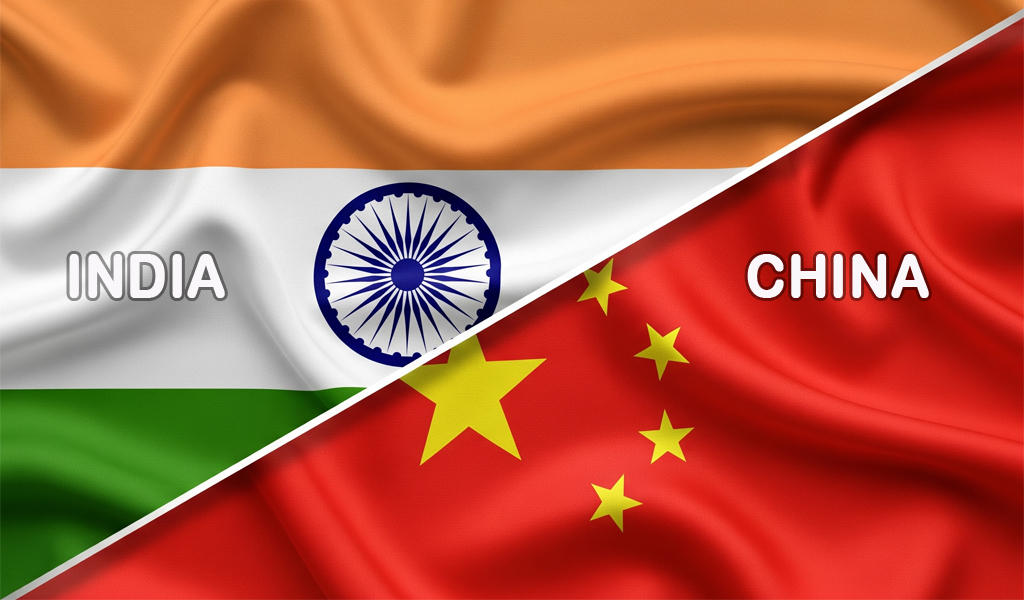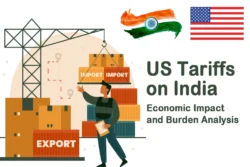India and China, the world’s two most populous nations, collectively account for approximately 35.17% of the global population, exerting profound influence over economic, geopolitical, and cultural spheres. In 2022, India surpassed China to become the most populous country, a demographic shift with far-reaching implications for global markets, labor dynamics, and resource allocation. This milestone reflects divergent population trends: India’s youthful, growing population contrasts with China’s declining and aging demographic, shaped by decades of the one-child policy (1979–2015). Economically, both nations are powerhouses, with China’s advanced industrialization and export-driven model contrasting with India’s rapidly growing economy, fueled by domestic consumption, services, and increasing manufacturing capabilities. Their trade profiles further highlight their distinct paths, with China’s massive trade surplus driven by manufacturing dominance and India’s trade deficit reflecting reliance on energy and electronics imports. This article provides a comprehensive comparison of their population dynamics, per capita income trends, and sector-wise trade data from 2020 to 2024, supported by growth rates, tabular representations, and insights from authoritative sources.
The interplay of population, income, and trade underscores the unique challenges and opportunities each nation faces. India’s demographic dividend, characterized by a large working-age population, offers potential for sustained economic growth, provided it can address infrastructure, education, and employment challenges. Conversely, China’s aging population and shrinking workforce pose risks to its economic dominance, necessitating policies to boost productivity and manage pension burdens. In trade, China’s role as the “world’s factory” contrasts with India’s emerging strengths in electronics, pharmaceuticals, and services, particularly IT. By analyzing five years of data (2020–2024), this article illuminates how these demographic and economic trends shape their global standing, with India poised for long-term growth and China navigating demographic headwinds. The analysis draws on the latest statistics from the World Bank, IMF, and other reputable sources to provide a detailed, evidence-based comparison.
Table of Contents
India vs China Population Dynamics
Population Size and Trends (2020–2024)
India’s population increased from 1.396 billion in 2020 to 1.451 billion in 2024, while China’s population declined from 1.425 billion to 1.419 billion due to its low fertility rate and the legacy of the one-child policy.
| Year | India Population (Billions) | China Population (Billions) | India Growth Rate (%) | China Growth Rate (%) |
|---|---|---|---|---|
| 2020 | 1.396 | 1.425 | 0.99 | 0.22 |
| 2021 | 1.407 | 1.426 | 0.79 | 0.07 |
| 2022 | 1.417 | 1.426 | 0.71 | 0.00 |
| 2023 | 1.429 | 1.423 | 0.85 | -0.21 |
| 2024 | 1.451 | 1.419 | 0.90 | -0.22 |
- India: The average annual population growth rate was 0.85%, with a total fertility rate (TFR) declining from 2.05 to 1.96 births per woman, approaching the replacement level of 2.1. Population density rose to 488 people per square kilometer in 2024, reflecting India’s smaller land area (2.97 million km² vs. China’s 9.39 million km²). The median age increased from 27.8 years to 28.44 years, indicating a youthful demographic.
- China: The population growth rate averaged -0.03%, with the TFR dropping from 1.18 to 1.01 births per woman, among the lowest globally. Population density remained stable at 148 people per square kilometer, and the median age rose from 38.4 years to 39.59 years, signaling rapid aging.
Demographic Composition
- India (2024): The age structure comprises 24.8% aged 0–14, 65.3% aged 15–64, and 9.9% aged 65 and above, yielding a dependency ratio of 48.7% (2023). This youthful demographic offers a potential demographic dividend if education and employment opportunities are scaled.
- China (2024): The age structure includes 15.4% aged 0–14, 62.8% aged 15–64, and 21.8% aged 65 and above, with a higher dependency ratio of 54.3%, driven by an aging population.
Life Expectancy and Urbanization
- India: Life expectancy improved from 71.2 years in 2020 to 72.24 years in 2024. Urbanization rose from 34.5% to 36%, with urban unemployment dropping from 7.1% to 6.4%, reflecting robust urban economic activity.
- China: Life expectancy increased from 76.8 years to 78.02 years. Urbanization grew from 61% to 64%, indicating advanced urban infrastructure but increased pressure on resources.
Analytical Insights
India’s youthful population and higher fertility rate provide a long-term economic advantage, contingent on addressing education, skill development, and job creation. High population density strains resources, necessitating sustainable policies. China’s declining population and aging workforce challenge economic sustainability, with a shrinking labor force and rising pension costs. Its lower density and higher urbanization support efficient resource allocation but stress urban systems.
India vs China Per Capita Income
Nominal GDP Per Capita (2020–2024)
China’s nominal GDP per capita significantly exceeds India’s, reflecting its advanced industrialization and earlier economic reforms.
| Year | India GDP Per Capita ($) | China GDP Per Capita ($) | India Growth Rate (%) | China Growth Rate (%) |
|---|---|---|---|---|
| 2020 | 1,933 | 10,409 | -6.60 | 1.98 |
| 2021 | 2,277 | 12,556 | 17.80 | 20.67 |
| 2022 | 2,389 | 12,741 | 4.92 | 1.47 |
| 2023 | 2,485 | 12,614 | 4.02 | -1.00 |
| 2024 | 2,697 | 13,313 | 8.53 | 5.54 |
- India: Nominal GDP per capita grew from $1,933 to $2,697, with an average annual growth rate of 5.73%. The 2021 spike reflects post-COVID recovery. India ranks 142nd globally in nominal per capita income.
- China: Nominal GDP per capita increased from $10,409 to 13,313, with an average annual growth rate of 5.33%. Growth slowed in 2023 due to global demand challenges. China ranks 73rd globally.
Purchasing Power Parity (PPP) GDP Per Capita
PPP adjustments narrow the gap due to India’s lower cost of living:
| Year | India PPP Per Capita ($) | China PPP Per Capita ($) | India Growth Rate (%) | China Growth Rate (%) |
|---|---|---|---|---|
| 2020 | 7,333 | 17,192 | -5.20 | 2.24 |
| 2021 | 8,358 | 19,338 | 14.00 | 12.48 |
| 2022 | 9,073 | 21,291 | 8.56 | 10.10 |
| 2023 | 10,159 | 23,309 | 11.97 | 9.47 |
| 2024 | 11,159 | 27,105 | 9.85 | 16.28 |
- India: PPP per capita grew from $7,333 to $11,159, with an average annual growth rate of 11.05%. India ranks 125th globally in PPP terms.
- China: PPP per capita rose from $17,192 to $27,105, with an average annual growth rate of 12.02%. China ranks 77th globally.
Economic Growth Rates
- India: Real GDP growth averaged 6.3% annually, with 2024 at 6.5%, driven by domestic consumption, infrastructure investments, and FDI.
- China: Real GDP growth averaged 5.2%, with 2024 at 5.0%, supported by high-tech manufacturing and exports but tempered by global trade slowdowns.
Analytical Insights
China’s higher per capita income reflects its earlier industrialization and export-led growth, but India’s faster GDP growth and lower cost of living suggest potential convergence in PPP terms. India’s income inequality (Gini coefficient ~0.35) and higher poverty risk (21.9% below the poverty line in 2020) contrast with China’s near-zero poverty rate and lower inequality (Gini ~0.30). India’s growth hinges on leveraging its demographic dividend, while China must address labor shortages due to aging.
India vs China Import/Export Trade Data (2020–2024)
India’s Trade Profile
India’s trade deficit expanded from $102.2 billion in 2020 to $240.7 billion in 2024, driven by reliance on energy and electronics imports.
Export Breakdown by Sector
| Sector | 2020 ($B) | 2021 ($B) | 2022 ($B) | 2023 ($B) | 2024 ($B) | Avg. Growth Rate (%) |
|---|---|---|---|---|---|---|
| Electronics | 10.0 | 13.5 | 18.0 | 22.0 | 28.0 | 29.41 |
| Petroleum Products | 29.0 | 42.3 | 55.0 | 52.0 | 50.0 | 14.59 |
| Gems & Jewelry | 18.7 | 30.0 | 38.0 | 36.0 | 34.0 | 16.14 |
| Chemicals/Pharma | 22.5 | 29.0 | 34.0 | 35.5 | 37.0 | 13.22 |
| Agriculture (Rice, Ores) | 15.0 | 18.0 | 22.0 | 24.0 | 26.0 | 14.67 |
| Total Exports | 275.5 | 417.0 | 451.0 | 437.1 | 431.6 | 11.87 |
- Electronics: Rapid growth due to mobile phone manufacturing and IT hardware, with a 29.41% average growth rate, driven by initiatives like “Make in India.”
- Petroleum Products: Peaked in 2022 due to high global oil prices but slightly declined in 2024.
- Gems & Jewelry: Strong recovery post-2020, though weakened in 2024 due to global demand slowdowns.
- Chemicals/Pharma: Steady growth, with India as a global leader in generics and vaccines.
- Agriculture: Consistent growth, driven by rice and ore exports.
Import Breakdown by Sector
| Sector | 2020 ($B) | 2021 ($B) | 2022 ($B) | 2023 ($B) | 2024 ($B) | Avg. Growth Rate (%) |
|---|---|---|---|---|---|---|
| Crude Oil/Petroleum | 82.0 | 120.0 | 180.0 | 175.0 | 170.0 | 20.01 |
| Electronics/Machinery | 50.0 | 65.0 | 80.0 | 85.0 | 90.0 | 15.83 |
| Gold/Precious Metals | 34.0 | 55.0 | 46.0 | 44.0 | 45.0 | 7.28 |
| Chemicals/Fertilizers | 20.0 | 25.0 | 30.0 | 32.0 | 35.0 | 15.00 |
| Total Imports | 377.7 | 573.0 | 714.0 | 677.8 | 672.2 | 15.54 |
- Crude Oil/Petroleum: Dominates imports due to energy dependency, with growth driven by price surges.
- Electronics/Machinery: Growing demand for semiconductors and industrial equipment.
- Gold/Precious Metals: Stable, reflecting cultural and investment demand.
- Chemicals/Fertilizers: Steady growth to support agriculture and industry.
Sector-Wise GDP Contribution (2023–24)
| Sector | GVA (Lakh Crore INR) | % of GVA |
|---|---|---|
| Services | 146.44 | 53.42 |
| Industry | 73.93 | 26.97 |
| Agriculture & Allied | 47.25 | 17.24 |
China’s Trade Profile
China maintained a trade surplus, growing from $535.0 billion in 2020 to $823.2 billion in 2024, driven by its manufacturing dominance.
Export Breakdown by Sector
| Sector | 2020 ($B) | 2021 ($B) | 2022 ($B) | 2023 ($B) | 2024 ($B) | Avg. Growth Rate (%) |
|---|---|---|---|---|---|---|
| Electronics/High-Tech | 947.0 | 1,050.0 | 1,100.0 | 1,080.0 | 1,150.0 | 4.97 |
| Machinery/Equipment | 600.0 | 700.0 | 750.0 | 740.0 | 780.0 | 6.78 |
| Textiles/Apparel | 258.0 | 315.0 | 323.0 | 300.0 | 290.0 | 2.97 |
| Chemicals/Metals | 200.0 | 250.0 | 280.0 | 270.0 | 280.0 | 8.78 |
| Total Exports | 2,590.2 | 3,364.0 | 3,593.6 | 3,380.0 | 3,379.3 | 6.86 |
- Electronics/High-Tech: The largest sector, driven by smartphones, computers, and semiconductors.
- Machinery/Equipment: Strong growth, supporting global supply chains.
- Textiles/Apparel: Declining share but still significant.
- Chemicals/Metals: Growth driven by steel and chemical exports.
Import Breakdown by Sector
| Sector | 2020 ($B) | 2021 ($B) | 2022 ($B) | 2023 ($B) | 2024 ($B) | Avg. Growth Rate (%) |
|---|---|---|---|---|---|---|
| Raw Materials | 650.0 | 800.0 | 900.0 | 850.0 | 830.0 | 6.31 |
| Electronics/Components | 400.0 | 450.0 | 480.0 | 470.0 | 490.0 | 5.20 |
| Agricultural Products | 150.0 | 190.0 | 200.0 | 210.0 | 220.0 | 10.07 |
| Machinery | 200.0 | 250.0 | 270.0 | 260.0 | 270.0 | 7.78 |
| Total Imports | 2,055.2 | 2,689.0 | 2,715.8 | 2,557.7 | 2,556.6 | 5.59 |
- Raw Materials: High demand for crude oil, iron ore, and copper.
- Electronics/Components: Critical for manufacturing supply chains.
- Agricultural Products: Growing to meet domestic food demand.
- Machinery: Supports industrial upgrades.
Sector-Wise GDP Contribution (2023, as a proxy for 2024)
| Sector | % of GDP |
|---|---|
| Industry (Secondary) | ~40% |
| Services (Tertiary) | ~50% |
| Agriculture (Primary) | ~8% |
Analytical Insights
- India’s Trade: The trade deficit reflects heavy reliance on imported energy and electronics. Electronics exports grew rapidly, but merchandise exports declined by 10.9% YoY (Year over Year) in February 2025 due to global demand slowdowns. The services sector, particularly IT, remains a global leader, contributing over 53% to GVA.
- China’s Trade: The trade surplus underscores China’s manufacturing dominance, with electronics and machinery as key drivers. Its diversified export base and supply chain control provide resilience, though global demand fluctuations impact growth.
- Comparative Advantage: China’s scale and infrastructure give it a trade advantage, while India’s growth in electronics and pharmaceuticals signals emerging competitiveness. India’s services sector is a strength, but its industrial base lags.
Conclusion
India and China present contrasting profiles in 2024. India’s larger, younger population (1.451 billion, +0.90%) contrasts with China’s declining, aging population (1.419 billion, -0.22%). China’s per capita income ($13,313 nominal, $27,105 PPP) significantly exceeds India’s ($2,697 nominal, $11,159 PPP), but India’s faster GDP growth (6.5% vs. 5.0%) suggests convergence potential. In trade, China’s massive surplus ($823.2 billion) contrasts with India’s deficit ($240.7 billion), with China dominating electronics and machinery and India excelling in services and pharmaceuticals. India must leverage its demographic dividend through education and industrialization, while China must address demographic challenges to sustain its economic lead.
References
- World Bank DataBank. (2024). World Development Indicators. https://databank.worldbank.org
- International Monetary Fund. (2025). World Economic Outlook. https://www.imf.org
- World Integrated Trade Solution (WITS). (2024). China Trade Statistics. https://wits.worldbank.org
- East Asia Forum. (2024). India’s Population Lead Over China. https://eastasiaforum.org
- Wikipedia. (2023). India. https://en.wikipedia.org/wiki/India







